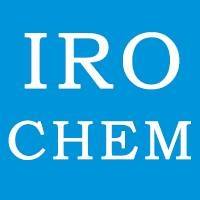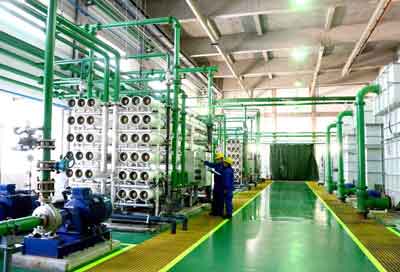
|
| Title: Discussion on Corrosion and Scale Inhibitors in Environmentally Friendly Oilfields | |
| WT Chemicals Forum > General > General Discussion | Go to subcategory: |
| Author | Content |
|
irochem
|
|
|
Date Posted:2018-10-19 02:50:25Copy HTML In order to prevent serious corrosion and scaling of pipelines and equipment used in oil fields, corrosion and scale inhibitors must be added to ensure safe operation of equipment. These water treatment agents will eventually be discharged into the environment as waste. With the increasing awareness of environmental protection, more and more demands are placed on various types of water treatment chemicals .
Environmental regulations are becoming more stringent, and chromium corrosion inhibitors are restricted in use due to environmental reasons. The phosphorus-based formula is currently refractory to algae due to phosphorus-containing compounds, making hydration of water bodies. Therefore, non-phosphorus non-chromium, environmentally friendly series of "green" products such as all-organic polymers and copolymers with corrosion and scale inhibition properties will become an important direction for water treatment research. Organic phosphine carboxylic acid: An organic phosphine carboxylic acid refers to a class of compounds having both a carboxyl group and a phosphonic acid group in the molecule. PBTCA, developed in the late 1970s, shows excellent corrosion and scale inhibition properties in an all-organic formulation. The compound has strong chemical stability, good thermal stability and low toxicity (P0i-11.5%), and has good scale inhibition effect on CaCO3, Ca3(PO4)2, CaSO4, MsSiO3, etc., and is difficult to form insoluble. The organic phosphonate deposit has a synergistic effect with the zinc salt and other dispersant components, and the dosage is 5-15 mg•L-1, which is a highly effective corrosion and scale inhibitor. Macromolecular aminophosphonic acid: introducing an ether bond into the molecule, which is superior in hydrophilicity and can simultaneously block CaCO3 and Ca3(PO4)2. It has high calcium tolerance, its scale inhibition ability is better than that of organic phosphonic acid and the high polymer, it is also very effective for silica scale, and it can stabilize iron, zinc and manganese oxides well, and has good corrosion inhibition performance. Suitable for high concentration multiple operations. Low-phosphorus polymer: A low-phosphorus polymer refers to a high-molecular polymer containing a phosphono, a carboxyl group, a sulfonic acid group or the like in a molecular structure. A variety of functional groups coexist, resulting in a strong chelation of the organophosphonic acid and high dispersion of the polymer. Low-phosphorus polymer has excellent scale inhibition and corrosion inhibition performance, stable structure, low phosphorus content (P043- less than 5%), low toxicity, and good compatibility with other chemicals. Phosphonopolycarboxylic acids (PCA): generally divided into two broad categories: phosphinopolyacrylic acid (phosphino PAA) and phosphinopolymaleic acid (phosphino PMA), respectively, with polyacrylic acid (sodium) and maleic acid (MA) is a basic monomer, which is formed by copolymerizing a peroxide with sodium hypophosphite (0Z can be regarded as a monomer) as an initiator. Phosphate-based PAA has an obvious synergistic effect on corrosion inhibition and scale inhibition effects of various formulations composed of HEDP, zinc salt, and various water-soluble polymers. Phosphor-based PMA has good scale inhibition and certain degree at low dosage. Corrosion inhibition performance, high tolerance to calcium, good stability under high temperature and high pressure, better inhibition of BaSO4 than the former. Therefore, future work should focus on the three major objectives of performance, economy, and environment. On the basis of further improving existing products and improving quality, we should strengthen mechanism research and compound research to reduce costs and reduce pollution. In the synthesis of new products, we must break through the existing ideas, actively use green chemistry technology, first green the target molecules, adopt the clean process, synthesize phosphorus-free, non-nitrogen, non-toxic substances, easy to biodegrade, and truly environmentally friendly. A highly effective corrosion and scale inhibitor to completely replace the phosphorus-containing formula. Global Water Treatment Chemicals Supplier
|






